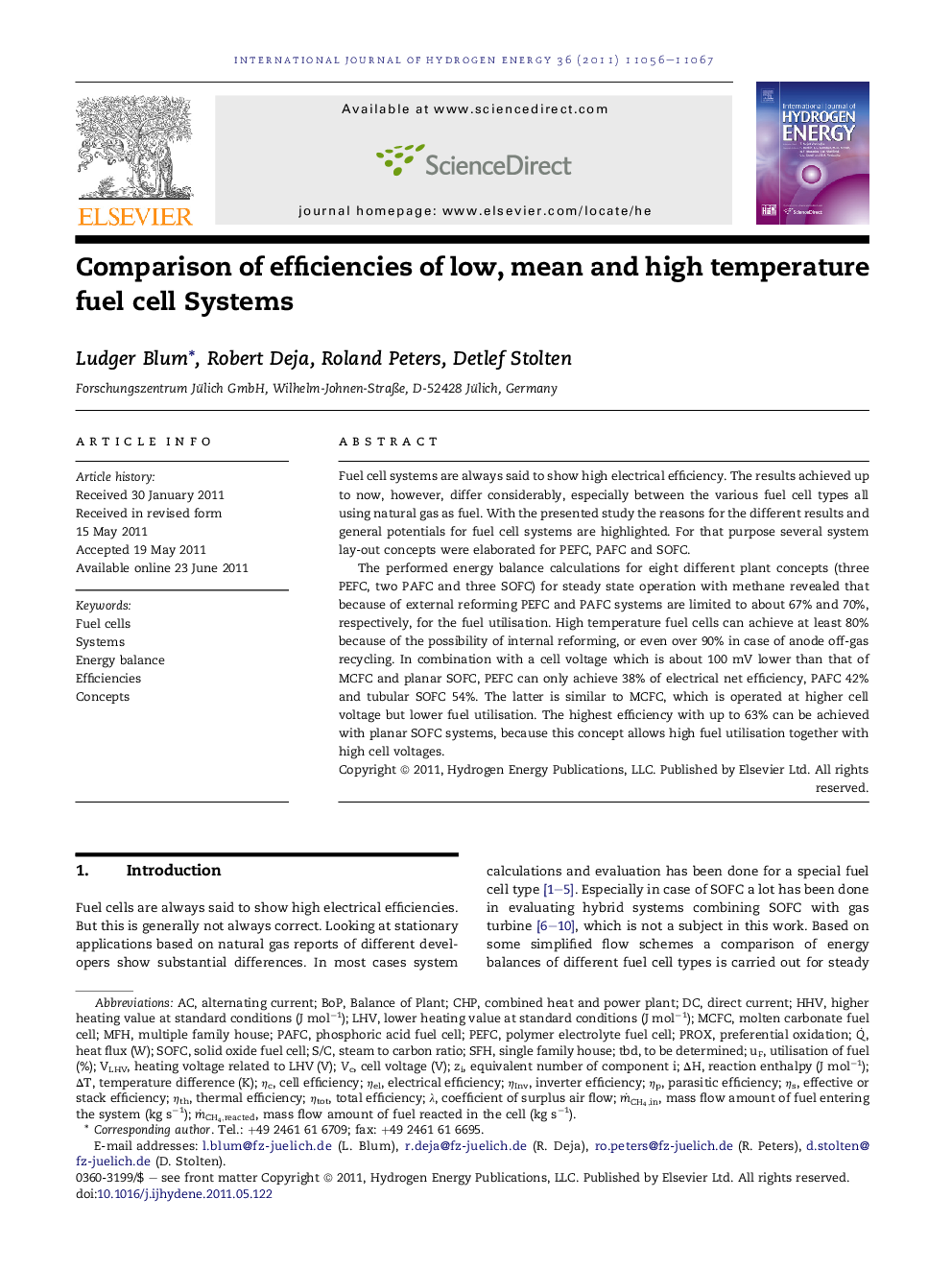| Article ID | Journal | Published Year | Pages | File Type |
|---|---|---|---|---|
| 1277577 | International Journal of Hydrogen Energy | 2011 | 12 Pages |
Fuel cell systems are always said to show high electrical efficiency. The results achieved up to now, however, differ considerably, especially between the various fuel cell types all using natural gas as fuel. With the presented study the reasons for the different results and general potentials for fuel cell systems are highlighted. For that purpose several system lay-out concepts were elaborated for PEFC, PAFC and SOFC.The performed energy balance calculations for eight different plant concepts (three PEFC, two PAFC and three SOFC) for steady state operation with methane revealed that because of external reforming PEFC and PAFC systems are limited to about 67% and 70%, respectively, for the fuel utilisation. High temperature fuel cells can achieve at least 80% because of the possibility of internal reforming, or even over 90% in case of anode off-gas recycling. In combination with a cell voltage which is about 100 mV lower than that of MCFC and planar SOFC, PEFC can only achieve 38% of electrical net efficiency, PAFC 42% and tubular SOFC 54%. The latter is similar to MCFC, which is operated at higher cell voltage but lower fuel utilisation. The highest efficiency with up to 63% can be achieved with planar SOFC systems, because this concept allows high fuel utilisation together with high cell voltages.
► We model low, mean and high temperature fuel cell systems. ► We elaborate the reasons for different efficiencies the different fuel cell types. ► Based on natural gas SOFC shows the highest potential.
